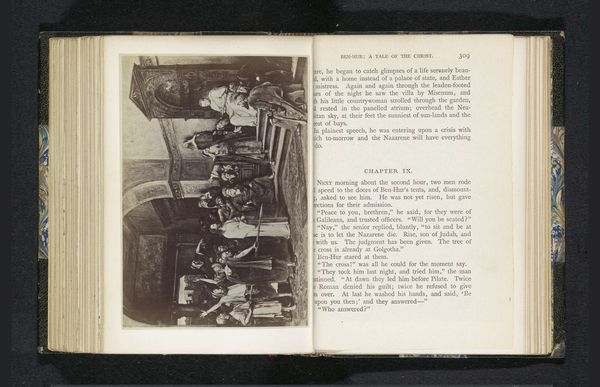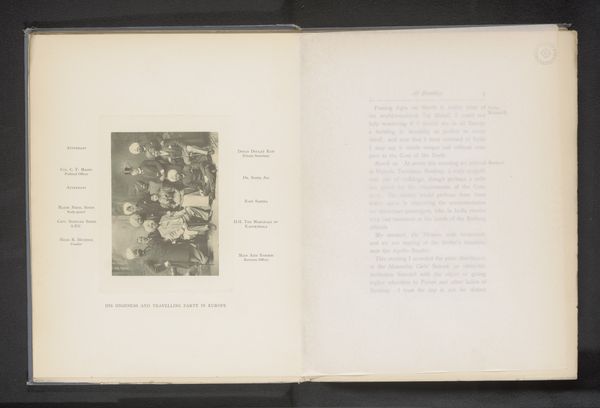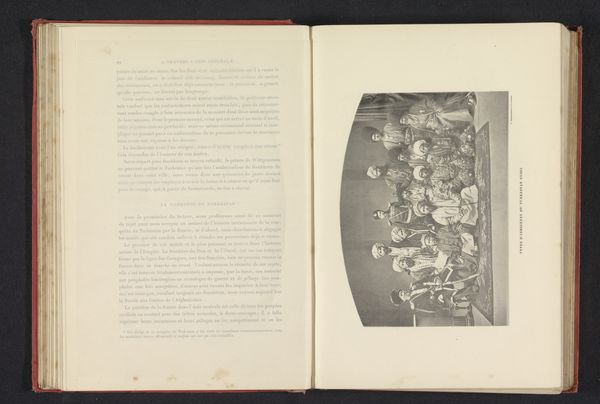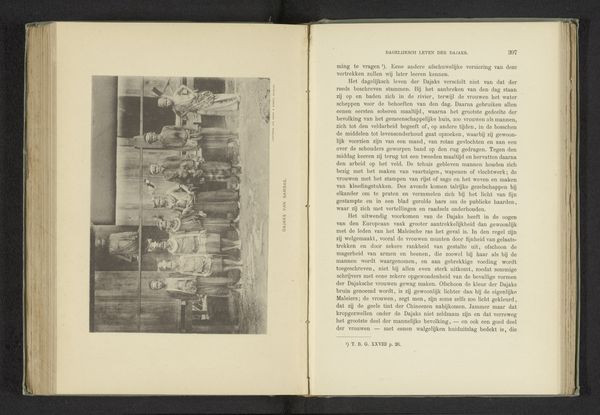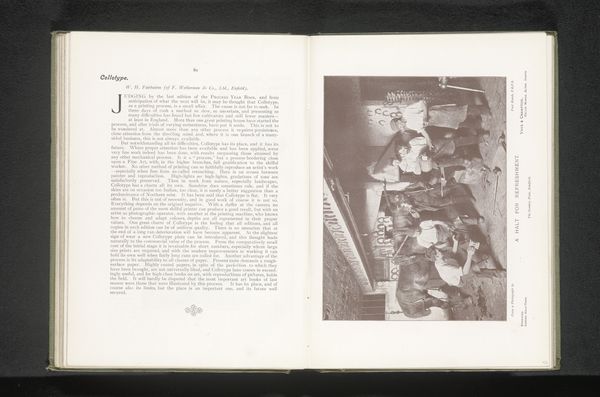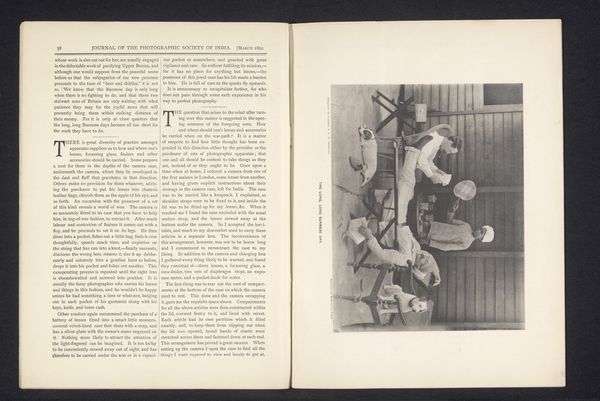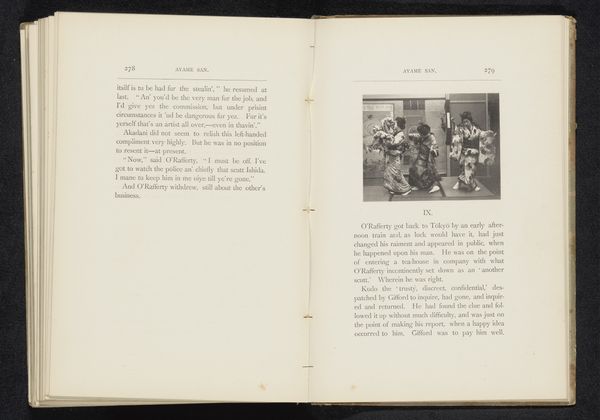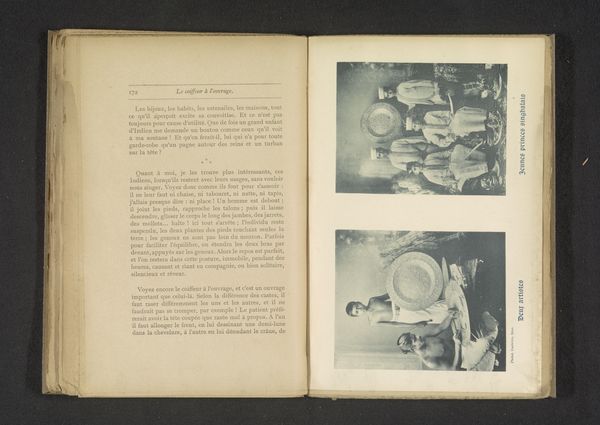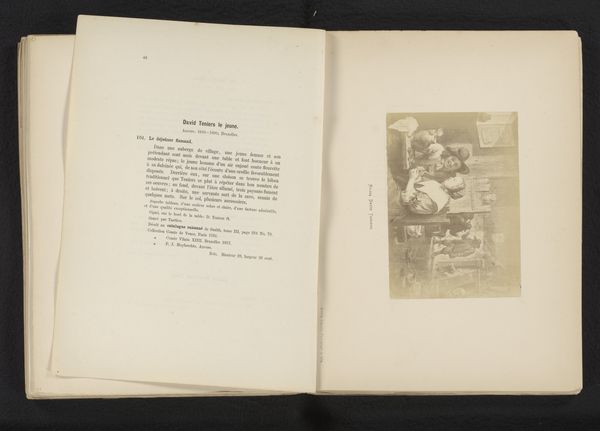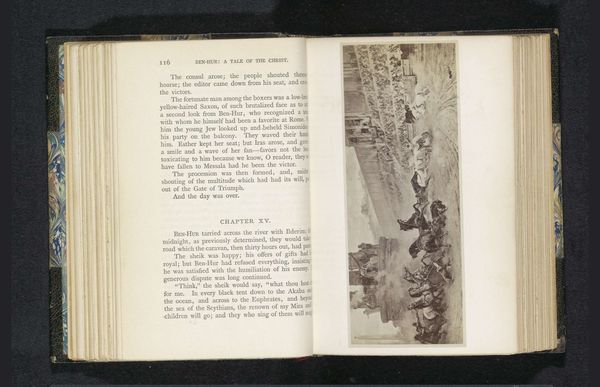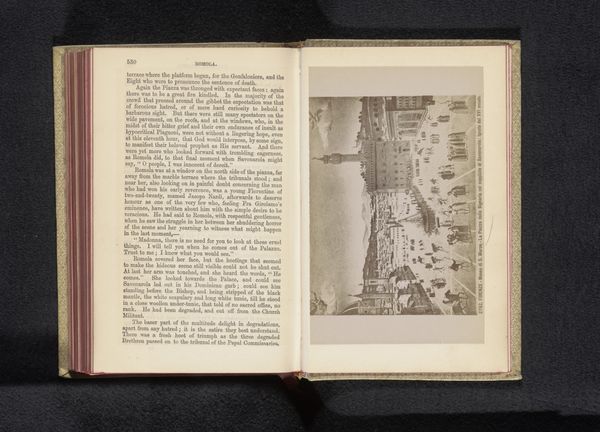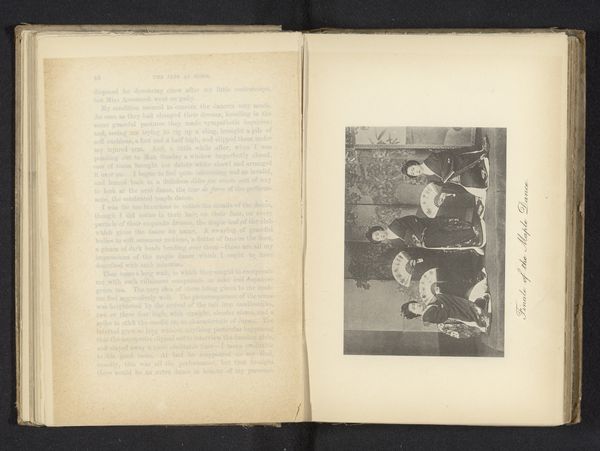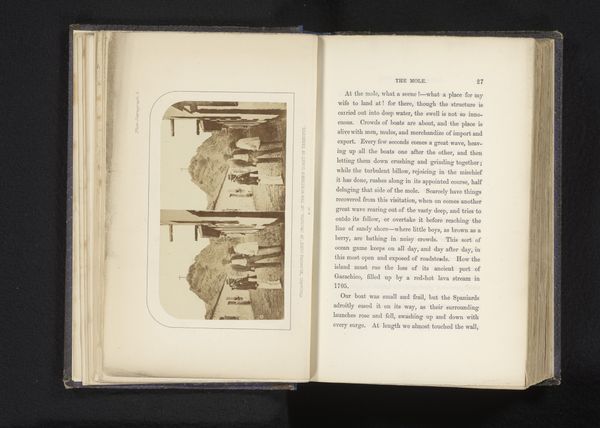
Twee fotoreproducties van een prent naar een muurschildering, voorstellende het Laatste Avondmaal before 1887
0:00
0:00
anonymous
Rijksmuseum
print, photography, engraving
#
narrative-art
# print
#
11_renaissance
#
photography
#
history-painting
#
italian-renaissance
#
engraving
Dimensions: height 156 mm, width 206 mm
Copyright: Rijks Museum: Open Domain
Curator: What strikes you first about this page? I’m immediately drawn to how pale the sepia tones are, almost dreamlike. Editor: Immediately, I’m thinking about power dynamics. Look how this moment of potential betrayal and deep introspection, from Leonardo's “The Last Supper,” is presented in the late 19th century: mediated, flattened, reproduced, and contained within the pages of a book. What is gained and lost in translation? Curator: Precisely. The Rijksmuseum holds these two photographic reproductions, created before 1887, of engravings depicting Leonardo's fresco. There is this fascinating layering of media at play. What does this gesture towards reproducing reproducibility tell us? Editor: Right, this isn't even the artwork. It's an image *of* images, prompting a host of questions. Who chose to include these particular reproductions? What's the context of this book? And why choose photography – then still a relatively new medium - to present these images? Curator: It’s anonymous, adding another layer of mystery! These aren’t crisp, modern photographs, which lends them a spectral quality. The soft focus almost imbues the scene with a sense of the ethereal, even when stripped from its architectural context. It takes away its immensity to give us a domestic iteration. Editor: And it makes you consider access. Before photography and readily available printmaking techniques, encountering iconic Renaissance masterpieces would be largely confined to the elite. The book, then, is democratizing. It attempts to make this pivotal scene accessible to a wider audience – a tangible, portable 'Last Supper.' How subversive or inclusive could it become through its mediation? Curator: I love that notion. The positioning on the page further enhances the experience. It begs you to turn it round and really look closely, forcing contemplation as a viewer. Is this some kind of precursor to digital archives? The internet itself is full of fuzzy appropriations. Editor: Maybe. Though it’s equally worth remembering what a precious object a book like this still was at that moment in time. These reproductions weren't just circulated freely online but carefully curated, bound, and presented in a specific narrative and for a specific educated consumer base. Curator: The more we dissect it, the more apparent its conceptual depth becomes. It's quite lovely when a seemingly simple image sparks so much thought, isn’t it? Editor: It is, especially when it reminds us to critically examine what and how historical narratives continue to be molded and circulated through contemporary platforms, even now.
Comments
No comments
Be the first to comment and join the conversation on the ultimate creative platform.
